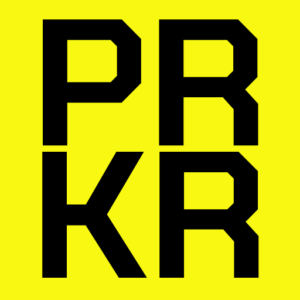Creating a press release for an event can be your ticket to garnering significant media attention and audience interest. Start with a captivating headline that grabs attention right away. Follow with a concise lead paragraph covering the essentials: who, what, where, when, and why. Use informative and engaging text to structure the body of your press release, incorporating quotes to add authenticity. Enhance the appeal with relevant visuals, making sure your release is error-free and well-formatted. Finally, include a compelling call to action and distribute your press release through appropriate channels. Engaging effectively with journalists can amplify your event’s reach and impact.
Understanding the Basics of a Press Release
Before diving into the creation of your press release, it’s crucial to understand the fundamental elements that make up a press release and their importance in conveying your message effectively and professionally. A press release includes several key components, each serving a specific purpose in delivering your message to the media.
Your press release format should always start with a headline, followed by a lead paragraph, the body of your press release, a boilerplate, and finally your contact information. Each of these elements plays a vital role in creating an event press release that grabs attention and accurately conveys your event’s details.
When you look at an event press release example, you’ll notice that it’s more than just an announcement; it’s a story. Different types of event press releases require a unique angle, but they all need to answer the who, what, where, when, and why.
The press release for your event should be carefully crafted, including engaging quotes, relevant details, and a compelling call to action. And remember, it’s not just about writing the release, but also about using a press release distribution service to ensure your media release reaches the right audience.
The press release creation process is as much about strategy as it’s about content.
Crafting a Captivating Headline
Your headline is the doorway to your event’s press release. It’s crucial to make it captivating, concise, and clear to hook your reader immediately.
Let’s explore some tips for crafting an irresistible headline and look at some successful examples.
Tips for Writing an Effective Headline
Crafting a captivating headline is crucial in capturing your audience’s attention; let’s explore five effective tips to make your headlines more engaging.
When you look at press release examples, you notice that a compelling headline is key to make people want to attend the event.
Firstly, keep it concise. Long headlines can be confusing and lose the reader’s interest.
Secondly, use action verbs. They add punch and convey the excitement of your event.
Thirdly, incorporate relevant keywords. These will help your press release about your event to be found in online searches.
Fourthly, make it specific. Highlight what’s unique about your event to spark curiosity.
Finally, focus on the benefits of attending your event. Will it be fun? Informative? A once-in-a-lifetime experience?
When you write an effective headline following these tips, your press releases for events will stand out. This can result in your upcoming event reaching the media more effectively, enticing more people to attend.
Indeed, a well-crafted press release can help drive increased event attendance. So, keep these guidelines in mind when working on your event press release format.
Examples of Successful Event Headlines
Let’s dive into five examples of successful event headlines to better grasp how to captivate your audience effectively. A compelling headline is crucial for your press release—it’s your first chance to attract attention and promote your event.
Here are some examples:
| Headline | Event | Why it Works |
|---|---|---|
| “Unveiling the Future: Tech Conference 2022” | Tech Conference | Excites curiosity, indicates a futuristic theme |
| “Groove to the Beat: Summer Music Madness” | Music Festival | Energetic, encapsulates the event’s vibe |
| “Empower and Inspire: Women’s Leadership Summit” | Leadership Summit | Provokes emotion, targets a specific audience |
| “The Art Revolution: Global Art Expo Unleashed” | Art Exhibition | Conveys the event’s grandeur, invites intrigue |
| “A Culinary Journey: Taste the World Food Fest” | Food Festival | Appeals to the senses, creates a vivid image |
These headlines are successful because they’re compelling, intriguing, and effectively convey the theme of the event. To increase attendance, distribute your official statement with a captivating headline—it makes a difference!
Starting with the Essentials
Starting with the essentials means focusing on the lead paragraph and the dateline. Your lead paragraph is the hook, answering the who, what, when, where, and why of your event.
The dateline, which includes the city and date of the release, is a crucial part of the press release format.
Writing the Lead Paragraph
When writing the lead paragraph of your press release, make sure to include the essential details of your event such as its date, location, and main purpose, which provide a concise summary to both the reader and potential attendees. This paragraph is crucial in setting the stage for the rest of your press release, and it’s where you’ll hook your reader’s interest.
- Clarity: Ensure your lead paragraph is clear and straightforward. Avoid jargon and keep your language simple. Your audience should immediately understand the basic event details.
- Conciseness: Don’t beat around the bush. Write a brief, to-the-point lead that encapsulates the essence of your event in a single paragraph. This concise summary is what’ll attract your reader’s attention.
- Precision: Be specific about your event’s date, location, and main purpose. Giving precise details not only helps in clear understanding but also aids in better event promotion and coverage.
Including the Dateline
Before delving into the details of your event, it’s crucial you correctly format the dateline, which includes the release date and location. This basic element of an event press release often dictates whether your news gets the desired press coverage.
A well-formatted dateline serves as a beacon for journalists, guiding them to your news amidst the sea of press releases vying for attention.
The dateline format typically begins with the city where the press release is originating, followed by the state or country in parentheses, and then the release date. It’s vital you adhere to this format while promoting an event as it sets the stage for the rest of your press release.
In the realm of event marketing, an effectively crafted event press release can amplify your reach, making the difference between a sparsely attended event and a full house. This begins with a correctly formatted dateline, setting the tone for the rest of your press release.
Building the Body of Your Press Release
Now, let’s focus on building the body of your press release.
You’ll need to structure your main content in a way that grabs and holds the reader’s attention.
It’s also important to integrate meaningful quotes and use bullet points to highlight key details about your event.
Structuring the Main Content
Dive into the task of structuring the main content of your event press release. You’ll strategically organize information into short, impactful paragraphs and bullet points for maximum clarity and impact.
To write a compelling body, your release must satisfy three fundamental criteria:
- Informative:
- Your release is an official statement about your event.
- Ensure it provides all the necessary details that will enable the press and the public to fully understand what the event is about, who it’s for, and why it matters.
- Engaging:
- Make your event irresistible.
- Craft your message in a way that motivates people to want to attend your event.
- An engaging press release increases event attendance.
- Persuasive:
- Your press release distribution should convince media outlets that your event is newsworthy.
- Make it clear why they should give your event press coverage.
Integrating Quotes
After structuring the main content of your press release, the next step is to add depth and authenticity to your narrative by integrating quotes from key stakeholders. This approach can inject a human touch into your event press release, making it relatable and engaging for your readers.
Quotes allow readers to hear directly from those involved in the event, thus adding credibility and perspective to your press release. Whether it’s a comment from the event organizer, a testimonial from a guest speaker, or insights from attendees, these direct quotes can significantly enhance your message.
When incorporating quotes, be sure to choose those that are insightful, relevant, and add value to the event’s narrative. Don’t just randomly insert quotes; they should flow seamlessly and support the information you’ve already provided.
Highlighting Key Details with Bullet Points
To make your press release more reader-friendly, consider highlighting key details using bullet points in the body of the release. Bullet points can make your event press release more digestible and easier to scan, ensuring that essential information isn’t lost in paragraphs of text. This can help to increase event attendance by conveying the most compelling aspects of your event quickly and clearly.
Here’s how you can use bullet points effectively in your press release body:
- Highlight Key Event Details:
- Use bullet points to outline crucial details like date, time, location, and main attractions of the event.
- This makes it easier for journalists to extract these details for event coverage.
- Summarize Official Announcements:
- If your event press release includes major announcements or reveals, summarize these in bullet points.
- This can grab the reader’s attention and increase the chance of your release distribution being successful.
- Showcase Press Release Examples:
- Use bullet points to highlight examples or quotes that support the central message of your release.
Adding Visual Elements
Adding visual elements to your press release can make it more engaging. High-quality photos, informative infographics, or short videos related to your event can grab a reader’s attention.
Let’s discuss best practices for including multimedia and consider some examples of effective visual integration.
Best Practices for Including Multimedia
Often, incorporating multimedia elements such as images, videos, infographics, or audio clips can significantly enhance the appeal and readability of your event press release. These elements not only grab attention but also add depth to your press release text. However, embedding multimedia should be done thoughtfully to ensure it complements the press release for your event.
Here are some press release best practices when choosing multimedia for your event press release:
- Relevance: Ensure the multimedia elements chosen are relevant to your event. Irrelevant or random images or videos can confuse the reader and detract from your main message.
- Quality: Always opt for high-resolution images and videos. Low-quality multimedia can harm your brand’s image and make your press release look unprofessional.
- Simplicity: Avoid overly complicated or cluttered infographics. Your audience should be able to understand the information conveyed at a glance.
Examples of Effective Visual Integration
Building on the idea of incorporating multimedia in your press releases, let’s look at some successful examples that have effectively used visuals to amplify their message.
A compelling example of visual integration in a press release for an event comes from the tech industry. The release included diagrams and infographics that clearly explained complex concepts, making the event’s purpose more accessible to the audience. The use of visuals wasn’t just decorative; it enhanced the message and made the press release more attractive for press release distribution.
Another successful press release in the fashion industry incorporated high-resolution images of the clothing lines being launched at the event. These visuals gave a peek into what attendees could expect, sparking interest and excitement.
One commonality between these successful press releases is the strategic use of visuals. They didn’t just randomly add images; instead, they carefully selected visuals that would enhance their message, making their event press release more compelling and easier to understand.
Finalizing Your Press Release
Now that you’ve crafted your press release, it’s crucial to give it a final polish.
You’ll start by thoroughly proofreading for any errors that might’ve slipped through.
Then, ensure your formatting is consistent throughout and don’t forget to include your contact information for any follow-up questions.
Proofreading for Errors
Don’t overlook the crucial step of proofreading your press release for both grammatical and factual errors to ensure professionalism and accuracy. In the rush to announce your event, errors can easily creep in. And these mistakes can detract from the impact of your message, not to mention undermine your credibility.
Proofreading is more than just checking for typos. It’s about maintaining the quality and integrity of your press release. It’s about ensuring your event details are accurate, your points are clear, and your language is professional.
Consider these three steps to effective proofreading:
- Check for grammatical errors: This includes punctuation, sentence structure, and spelling. Grammatical errors can make your press release difficult to read and understand.
- Verify factual details: Ensure all event details, like dates, times, and locations, are correct. Inaccurate information can confuse your audience and damage your reputation.
- Maintain a professional tone: Avoid slang, jargon, or overly complex language. Your press release should be accessible and straightforward.
Consistent Formatting
After ensuring your press release is error-free, it’s important to focus on maintaining consistent formatting throughout the document to enhance its readability and overall professionalism. Consistency is the key to making your press release appear official and polished, and it also aids in better comprehension of the event information.
Follow these tips to maintain consistency in your press release’s formatting. Start with a captivating headline, followed by a succinct lead paragraph that summarizes the event. This should be followed by the body of the release, providing essential event details. Make sure all these sections follow a consistent format.
Use a standard font and size throughout the document. It’s also crucial to maintain consistent spacing between lines and paragraphs. Avoid using multiple font styles or colors as they can distract the reader and reduce readability.
Lastly, always align your text to the left and use bullet points or numbered lists to highlight important facts. This will enhance the readability and allow the reader to scan the information quickly.
Adding Contact Information
To finalize your press release, it’s imperative to include detailed contact information, ensuring journalists have a direct line to further inquiries about your event. This is a critical step in making your press release effective, as it provides a direct avenue for media personnel to seek additional details or clarify any ambiguities.
Your contact information should be clear and comprehensive. It should include:
- Your full name and position.
- An email address that you frequently monitor.
- A direct phone number where you can be reached.
The positioning of your contact information is also important. Typically, it’s placed at the end of the press release, signifying the conclusion of the main content. This formatting is universally recognized, hence it’s recommended to stick to it.
Timing is key in the distribution process. Ensure your press release is sent out at an optimal time for media coverage. Make sure to factor in different time zones if your event has a global reach.
Ultimately, the promotion of your event hinges on an effective press release, and your contact information plays a significant role in that.
Distributing Your Press Release
Now that you’ve got your press release ready, it’s time to get it out there.
You’ll need to select the right distribution channels and make sure it lands in the right inboxes.
Engaging with journalists directly can also increase the likelihood of your event getting noticed.
Choosing Distribution Channels
Choosing the right distribution channels for your press release can significantly enhance its reach and impact. Your press release distribution is a crucial element of your event promotion and event marketing strategy.
- Online Platforms:
Use online platforms for your press release distribution. Websites, blogs, social media, and email newsletters are effective ways to disseminate your press release to a wide audience. They can offer immediate visibility and enable you to control your message and timing. - Targeted Media Outlets:
Send your press release to targeted media outlets for event coverage. This includes local newspapers, TV and radio stations, and industry-specific publications. These outlets can provide extensive media coverage, increasing your event publicity. - Press Release Distribution Services:
These services can distribute your press release to a network of journalists, bloggers, and news outlets. They can help ensure your press release reaches the right people, at the right time.
Engaging with Journalists
How can you ensure your press release stands out to journalists in a sea of daily emails and updates? Engaging with journalists is crucial for your event press release to be noticed. Start by building relationships with journalists and media outlets. This doesn’t happen overnight but is a long-term investment that can significantly increase your press release being picked up.
Tailor your press release distribution to target journalists who cover your event’s field. Research their work, understand their audience, and customize your pitches to suit their style. Personalize your emails, respect their deadlines, and always offer high-quality, newsworthy content. This way, you’re not just another name in their inbox but a reliable source of valuable information.
Conclusion
There you have it! Now you’re ready to craft an attention-grabbing press release for your event. Remember, start with a captivating headline, include essential details, build an engaging body, add some visuals, and ensure a flawless finish.
Then, distribute strategically for maximum impact. With these tips, your event’s bound to make waves.
So, go ahead, start crafting that perfect press release. Your event deserves the spotlight and you’ve got the skills to get it there!


